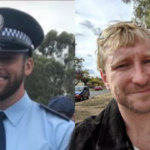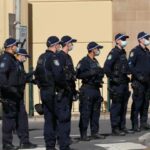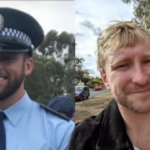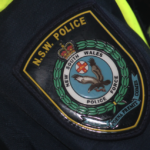Police Watchdog Finds that Officer Who Fabricated Evidence Engaged in ‘Serious Misconduct’
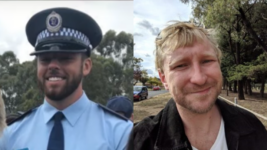
Nowra man Luke Brett Moore raised a complaint with the Law Enforcement Conduct Commission in May 2021, regarding a phone conversation he’d had with NSW police constable Daniel Keneally that, he claimed, led the officer to subsequently fabricate evidence against him, which saw him gaoled.
Moore was hauled into Nowra police station on 25 February 2021, and he admitted to calling Newtown police station the night prior to speak with any officer who answered. But he denied that in speaking to Keneally that he’d threatened the safety of a specific Goulburn police officer.
Yet, based on Keneally’s statement, Moore was then charged with two counts of use carriage service to harass, contrary to section 474.17 of the Criminal Code Act 1995 (Cth), and one count of use carriage service to make a death threat, which is contained in section 474.15 of the Code.
So, in considering a combined total maximum, Moore was facing up to 20 years in prison.
On the same day of his arrest, Moore’s house was raided and his electronic devices, including his phone, were seized, while at Nowra Local Court he was refused bail, as police opposed it, but he was then granted conditional release unopposed by NSW police on 19 March, after 22 days on remand.
According to the LECC inquiry Operation Tambre, NSW police and AFP experts had found a recording of the conversation between Moore and Keneally on the then remandee’s phone, which clearly revealed that no threat had been made against any Goulburn police officer during the conversation.
And on forensic experts from both agencies having confirmed that it was a true recording, the Commonwealth Director of Prosecutions, who’d been tasked with the case, dropped two charges on 7 June 2021 and then the final count was disposed of on the 25th of that month.
Absolving their own
Published last month, the Operation Tambre report outlines that on receiving his request, the LECC wrote to Moore advising him that, as per protocol, the misconduct complaint would be investigated by NSW police and the NSW Crime Commission, while it would oversight that investigation.
And in mid-October 2021, those two law enforcement agencies reported to the state’s sole police watchdog that although Keneally’s “statement was inconsistent with the… recording made by Moore of their conversation, there was no evidence the officer intentionally made a false statement”.
But the official police report found that Keneally didn’t show “due diligence and care” when making his record of the conversation, which in turn breached the NSW Police Force Code of Conduct and Ethics, and this then warranted his receiving a “non-reviewable commander’s warning notice”.
Moore, however, then expressed his dissatisfaction with the inquiry to the LECC, and it determined to carry out its own investigation into Keneally in late 2021 to determine whether he or any other officer had engaged in serious misconduct, which would require a private examination of Keneally.
What the constable had to say for himself
The private examination of Keneally took place on 20 January 2022. He explained that the reception duties he was charged with on 24 February 2021 were not a part of training at the academy. However, whilst there, it was drummed into him to take notes following interactions with the public.
Keneally said he wasn’t aware of any specific procedures when threats to officers had been made over the phone, but he would tell a supervisor if it did occur, and he added that he was unaware that phone calls could be recorded at Newtown station but agreed that it would be helpful to do this.
The then NSW police constable said he received a call from Luke Brett Moore at around 8.30 pm, which lasted for 12 to 13 minutes. And the caller had told him he was the CEO of ISUEPOLICE.com.
And after the call, Keneally phoned Goulburn police station and drew attention to comments made about a specific officer on the ISUEPOLICE.com site. But these comments, which weren’t violent threats, were made in relation to a specific officer that Keneally then said had been threatened.
Following having spoken to Goulburn, Keneally then told his shift supervisor Sergeant Taleski about the Moore call, who told him to contact the Real–Time Intelligence Centre. And the constable then wrote the report regarding the call but was unsure if he did that in response to Taleski or RTIC.
“Officer Keneally said that no one else assisted him in creating the narrative,” the LECC report notes, “and that he did not receive any information that influenced what he recorded in the narrative.” And he signed off on the typed statement at 11.35 pm, being fully aware it could be used as evidence.
In his statement, however, Keneally did include comments bound within quotations marks that had Moore requesting that the Goulburn officer be told that he “is coming for” him, along with the remark, “My aim is to have you… gone by April 1 2021”.
In being shown a copy of Moore’s site, Keneally agreed that in February 2021 it said he’d brought civil litigation against the Goulburn police officer, that he would put an end to police touching children when strip searching them, and he added that he would be “coming for” officers that did this.
Keneally confirmed that on Moore’s site there was a statement regarding the police having “started a war on us” but that “it is a war we’ll win with words, not weapons”. And Moore then added, “I would never advocate for violence against police unless it was reasonable in the circumstances”.
The constable also admitted that the comment on the website about having a specific Goulburn officer “gone by April 1” was preceded by another sentence that stated if twenty people came forward with accusations about the officer misapplying strip searches, he would lose his job.
And Keneally further agreed that by selectively including parts of statements from the site, he’d created the impression that Moore wanted to violently harm an officer, yet this wasn’t intentional, even the part where on being asked to clarify his intention, Moore responds, “Good as gone. Dead”.
The death threat you make, when you’re not making a death threat
Kenneally provided the watchdog with two reasons for the discrepancies. The first was that as he was taking the call and reading from the website, he became confused hours later when writing the report, and the second was that his notetaking during the call accidentally mixed comments.
But the LECC found that while it was plausible for some discrepancies to occur, this was not to the point where a completely false death threat could accidentally have been perceived, especially as the subject of the threat was never mentioned during the call.
Further, Keneally wrote that Moore wanted a specific officer gone by a specific date, which was taken from the website with a sentence preceding it that makes certain it is not a threat of violence, and this was a clear example of the NSW police officer misrepresenting what had occurred.
To say that he was confused at the time of making the statement hours later was further “disingenuous”, the watchdog continued, as he obviously had the website open when writing the statement as he’d recorded certain points made precisely with quotation marks.
And there were many more discrepancies between the accounts given and the statements made as Keneally had Moore explaining he knew where the officer lived, that he would follow him home and that he wanted him “dead” but none of these suggestions appear on the site or in the call.
Glaringly obvious serious misconduct
The LECC found that Keneally’s claims that he’d simply been confused on the night of the call, with information being spoken whilst he was simultaneously reading a website, did not hold because the omissions of website details and the addition of false statements were beyond accidental.
“The commission is satisfied to the requisite standard that the creation of those inaccuracies was intentional, and amounts to a false accusation, which could result in the prosecution of the officer for a serious criminal offence,” the Operation Tambre inquiry concluded last month.
“Accordingly, the commission is satisfied the conduct of officer Keneally amounts to serious misconduct.”
Kenneally was found guilty of fabricating false evidence, contrary to section 317(b) of the Crimes Act 1900 (NSW) in November last year, and in February, he was sentenced to a 10 month intensive correction order (ICO) at the Downing Centre Local Court.
And many consider Keneally to have got off quite lightly.


